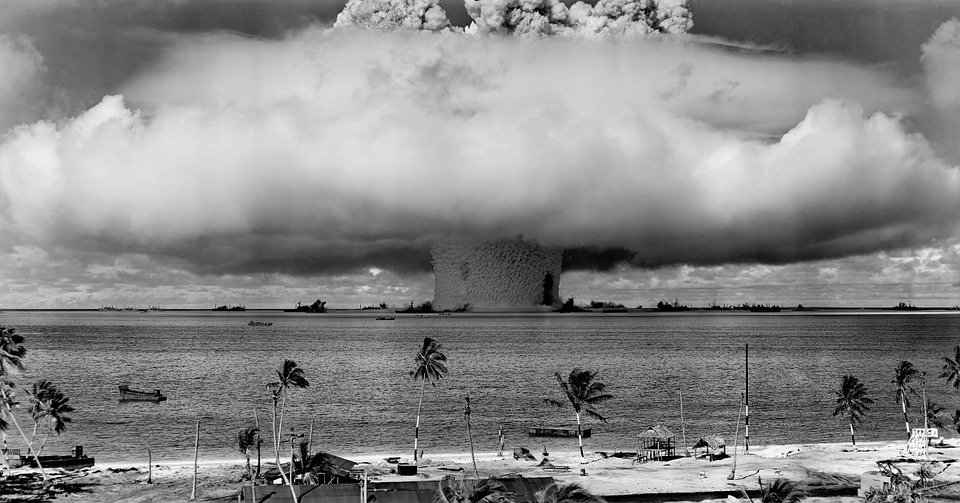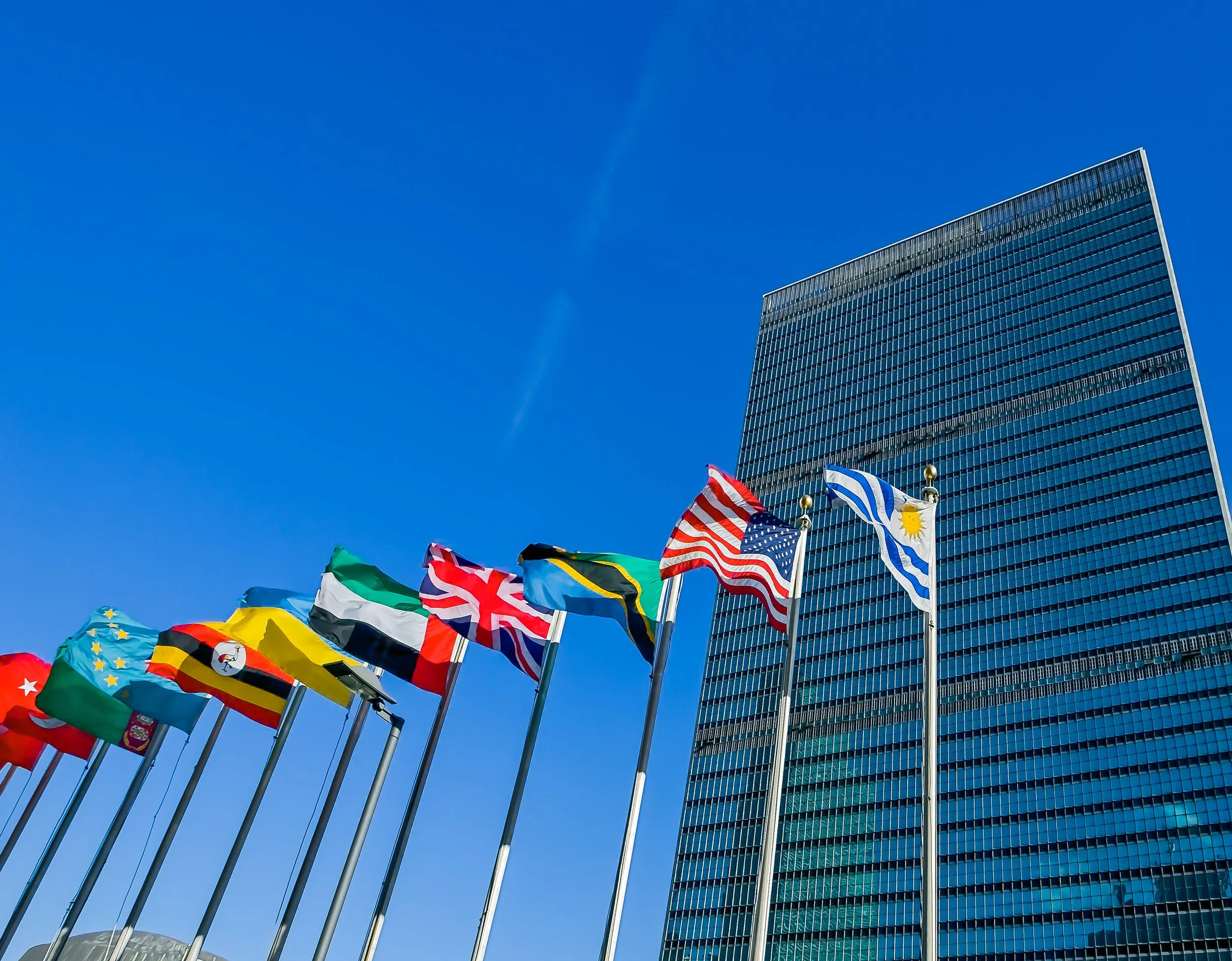
DISARMAMENT TIMES
August 2022
By: Zane Taylor
Can We Escape a M.A.D World?
Thirty years have passed since the official end of the Cold War—when tensions surrounding the use of nuclear weapons was at its highest—and the world is seeing a resurgence in the use of nuclear threats by leaders as a way to display power. With the ongoing war in Ukraine, one certainly doesn’t want nuclear weapons to fall into the wrong hands; however, Russia, followed by the United States and China, have the highest number of weapons in their nuclear arsenal. The United States has already proven it will use nuclear force if deemed necessary, but is the threat of mutually assured destruction (MAD) enough to convince leaders to completely disarm their nuclear stockpiles?
After moving to Nevada, one of the first topics I remember being introduced to during my education was the nuclear test sites of the Cold War, just north of Las Vegas. Little did I know the purpose of testing nuclear weapons wasn’t just to make sure they worked, but it was to deter other countries from attacking the United States so long as they knew that the consequences would be devastating. This is a similar tactic employed more recently by North Korea and Russia, and is the heart of the concept of mutually assured destruction.
Though the United Nations has registered many multilateral agreements about bans on nuclear testing, including the 1996 Comprehensive Nuclear-Test-Ban-Treaty, agreed to by many of the world’s most prominent nuclear forces including Russia and the United States. Not to mention, nuclear energy can be particularly harmful to the environment it is stored in while harming those around it. While nuclear energy has been revered as an alternative source of power due to its low carbon output, its waste can take hundreds—or even thousands–of years to decay while potentially contaminating water supply to agriculture.
The next steps proposed at the United Nations seem to be promising, so long as states are concerned about the potency of future relations. Some seem to be common sense solutions, such as regarding the destruction of inactive nuclear weapons—which does not happen, reflected in the reports of nuclear weapon amounts. But other proposals seem to pose more of a difficult, but not impossible, journey. These include removing the focus on nuclear weapons in military strategy, especially for NATO countries, as well as forbidding new fissile material production for military purposes, and the establishment of new nuclear-weapon-free zones, each of which might leave states feeling more vulnerable to outside attack.
There’s a concept in international relations, especially when dealing with military and armament, called the security dilemma: As countries build up their security capacity, they in turn become weaker and more vulnerable due to the higher risk of war. The creation and modern testing of nuclear weapons exemplifies this dilemma as we slip further into a nuclear scare reflective of World War II and the Cold War. If the harmful effects that storing nuclear waste has on our environment is not enough to make today’s leaders disarm, perhaps the concept of mutually assured destruction will keep nuclear war at bay, as it has since the end of WWII. States, in focusing on the well-being of their domestic populations and their future relations, should consider collaborating with the United Nations on their proposed solutions. These proposals are not distant aspirations, as the UN seems to receive backlash for in its work; these solutions are most certainly attainable and could save innumerable lives.
UN Conferences Can Have Significant Results
Well, I do believe this. It was my first attendance “not as a staff member or an official of the Organization” as my UN badge said, but as a representative of one of the official NonGovernmental Organizations (NGOs): the United Nations Office of the Unitarian Universalist Association. The Conference was the Tenth Review of the Treaty for the Non Proliferation of Nuclear Weapons, originally scheduled for 2020 but postponed several times due to Covid to July 1-26 of 2022. It brought together delegations from the 191 Member States of the Treaty, and a range of approximately 600 NGOs and their delegations interested in and highly informed of the topic.
The Treaty was in its 52nd year and operated under three main pillars: Disarmament, National Security and Peaceful Uses of Atomic Energy. It took place in the main building of the UN headquarters on the lower level in the area near the public bookstore and shop, but housing the conference rooms where the NGOs and governments wishing to hold programs of their work on the topic for the NGOs had their meetings. One needed the necessary badge to gain admittance to this area.
The Conference was organized in typical UN fashion with meetings specifically for the UN Ambassadors of the various governments attending , and a parallel conference for NGOs. I had always imagined that these were held in different locations, but at this conference, the sessions were in adjacent conference rooms so intermingling was very possible.
The pillars mentioned above defined the three Committees for the government delegates; Committee One for Disarmament; Committee Two for National Security , and Committee Three for Peaceful Uses of Atomic Energy.
The NGO representatives included an array of distinguished scholars, scientists, and organizational leaders like Beatrice Fihn of the Nobel Prize Winning, International Campaign for the Abolition of Nuclear Weapons (ICANW) and many others. Individuals made their own choices of which sessions to attend whether they were the NPT Committees noted above, or a wide range of offerings by the NGOS or the Governments. Sessions were scheduled during the weekdays for four consecutive weeks with each week having a Draft Report of recommendations made by the delegates during their NPT Committee meetings.
I got to attend several of the meetings of Committees ! and 3 and was very much taken by the professionalism, respect and decorum of the entire session. Each speaker was politely introduced and thanked by the end of his or her remarks. It felt like what a real democracy was like. Occasionally delegates might request and receive a right of reply, if they wanted to clarify, correct or were offended by something said, but the tones were still respectfully done. By the end of the week, the Ambassadors facilitating the meeting even commended how cooperative the sessions were.
The intent of the review was to see if there should be any changes made to the Treaty. These recommendations were collated the final week of the conference. And had to be approved by all members for it to become the FINAL DOCUMENT. In Committee 1, ArticleVI was strongly emphasized by a large number of the delegates. This was the article calling on the nuclear weapons states to “accomplish the total elimination of their nuclear arsenals leading to nuclear disarmament” and was written into the original Treaty 52 years ago. Many of the nations complained that the nuclear weapons states had not fulfilled their promise to eliminate their weapons. In the Eight Review Conference in 2010, 44 nations raised this as a very serious issue – growing to 126 nations in the Ninth Review Conference in 2015 and the ultimate design and entry into force of the Treaty for the Prohibition of Nuclear Weapons (TPNW) (for which ICANW won the 2017 Nobel Peace Prize). This time, under the leadership of the Ambassador of Mexico a letter signed by 145 nations expressed their support for this Treaty in a special message to the entire NPT membership during the final week.
While there was no Final Document approved for this conference (Russia objected to comments concerning the nuclear power plant currently occupied by Russian forces in Zaporizhian, Ukraine et.al.) , it was pointed out that the same call for disarmament in 2015 at the NPT Conference (which produced no Final Document) led to the UN General Assembly authorizing the creation of the Treaty in subsequent sessions, so those voices were heard and acted upon.
As a supporter of the Treaty, I was strongly encouraged hearing the voices of so many delegates expressing their very real and eloquent concerns about the need for an end to the fighting in the Ukraine, the need for negotiations, the elimination of all nuclear weapons, the support for the TPNW and the enforcement of the multiple terms of that Treaty as evidenced by the 50 provisions accepted by the Vienna meeting in June 2022 of all the states which ratified and were now enforcing it.t
One positive development was the inclusion not only strongly supporting the renewal of the START Treaty between Russian and the United States, but their agreement to extend negotiations in 2026 (the end date of the current Treaty ) towards further reduction and eventual elimination of nuclear weapons. Both countries supported this entry.
I was surprised to learn from one of the sessions’ speakers (Dr. Sharei at the Africa and the Effects of Nuclear Weapons Testing) that the Treaty itself was only on paper: there is no UN agency, website, organization, officers, Secretary General to oversee its complete implementation and enforcement. No wonder why Article 6 was so widely addressed . Couldn’t such an organizational change be something that the General Assembly could authorize? Should authorize? That might help the Eleventh NPT Conference to be more successful. Those nuclear weapons are certainly an expensive item for all the nuclear weapon states.
For me, I was truly inspired by this experience, and it gave me much hope that the intermingling of these amazing voices will make a difference for our future generations, even if some were not happy that a stronger FINAL DOCUMENT was not approved. It is up to us to help make that happen.

